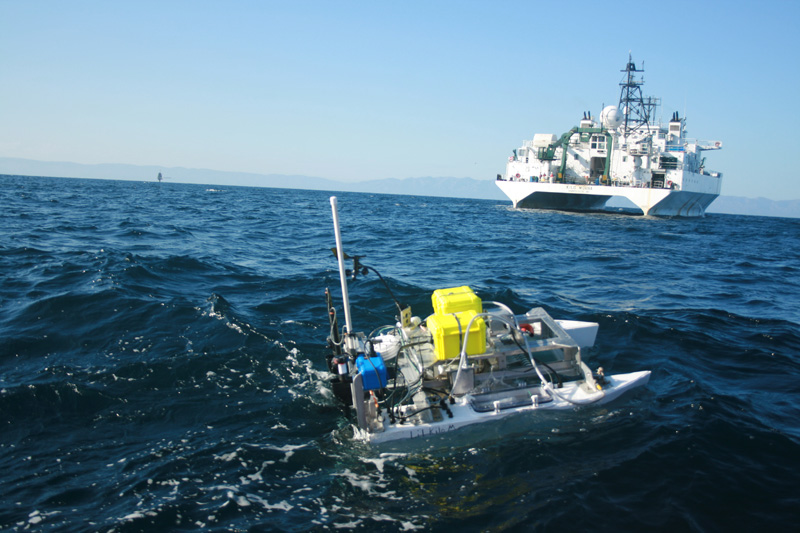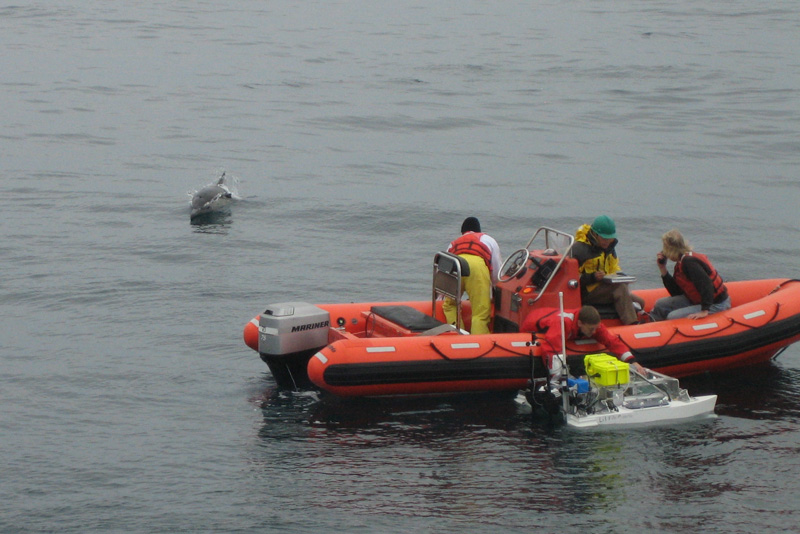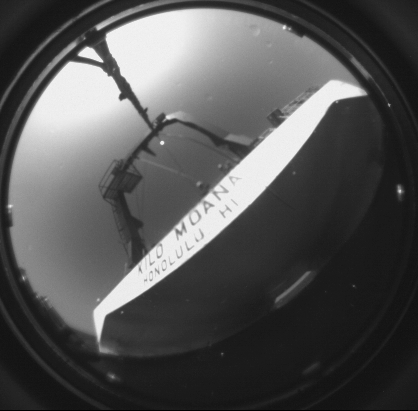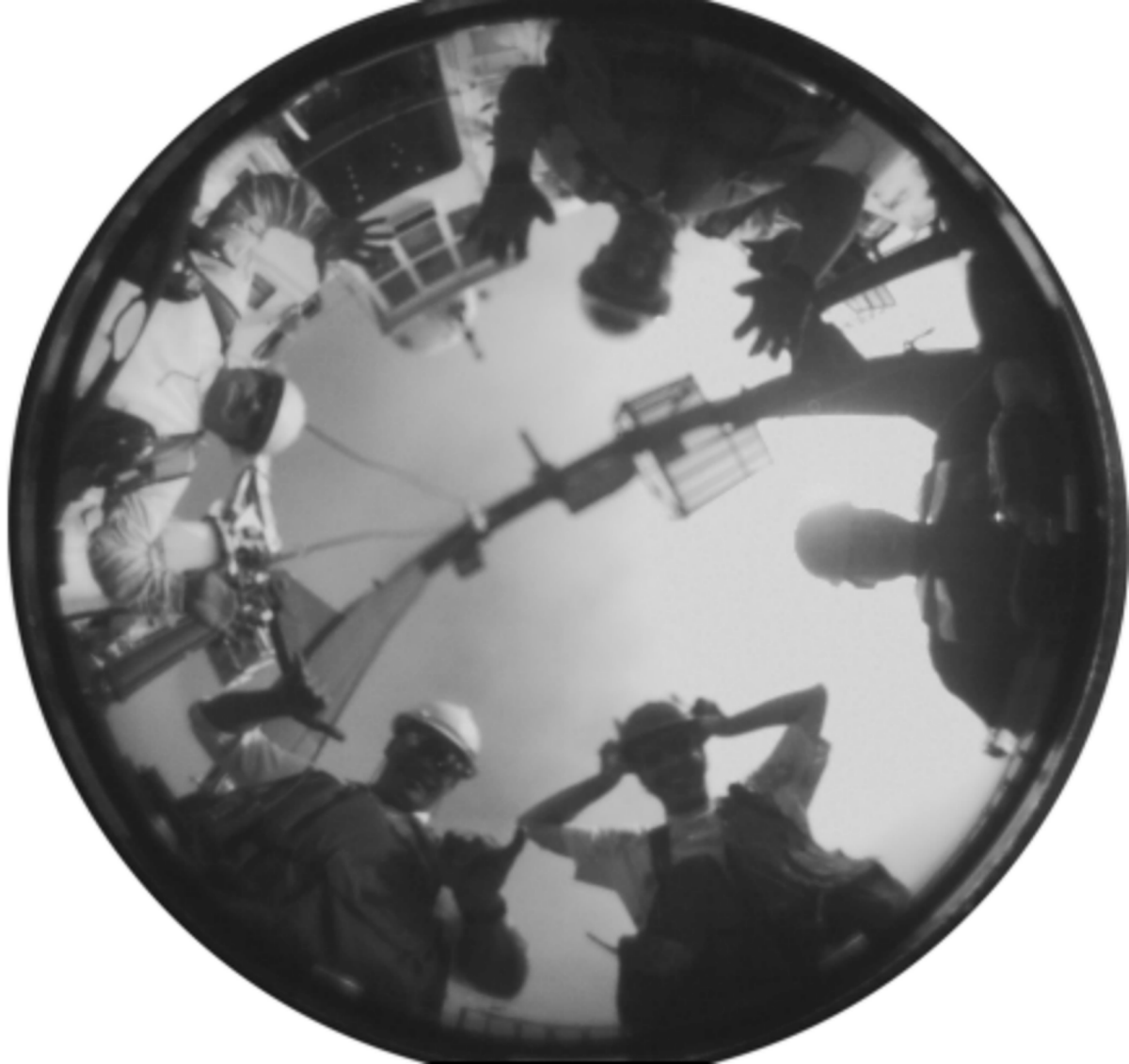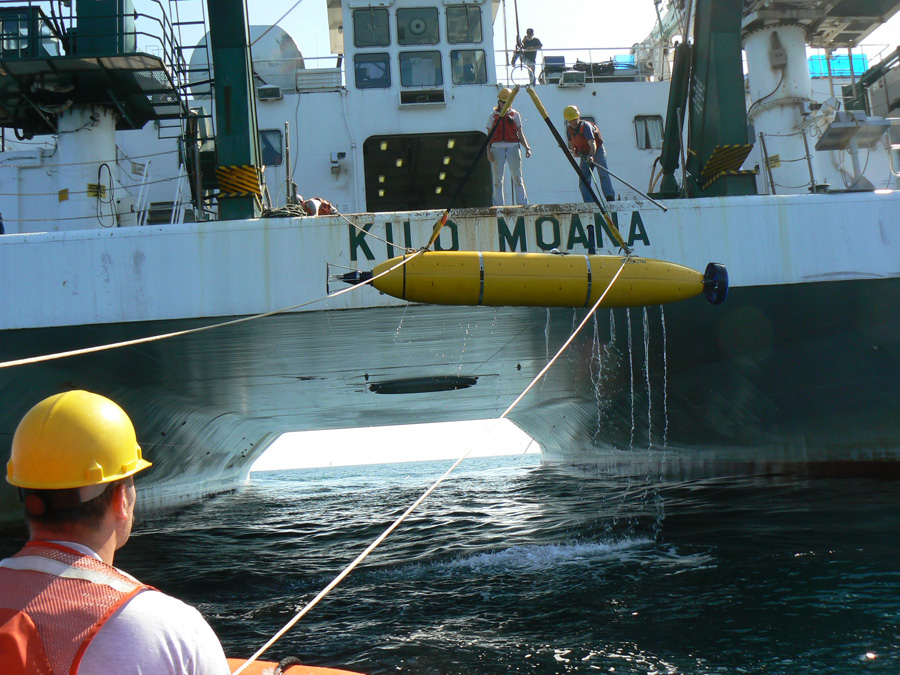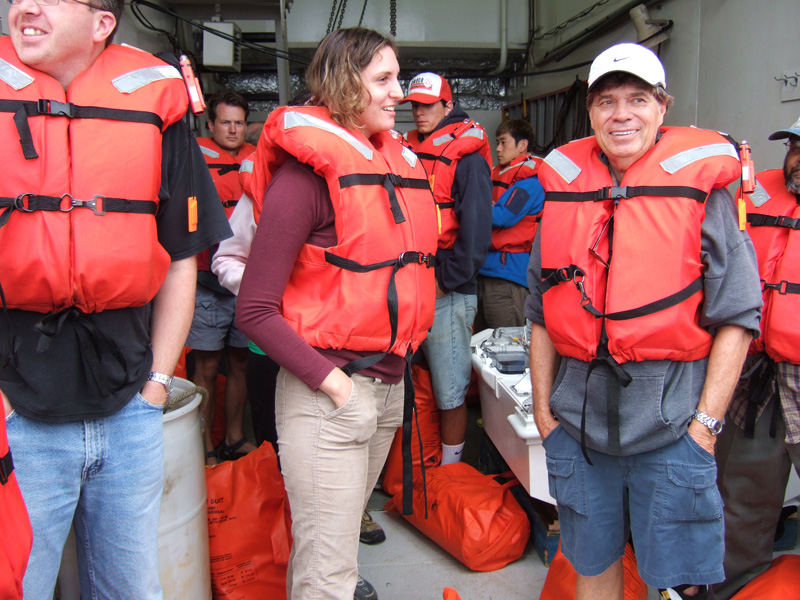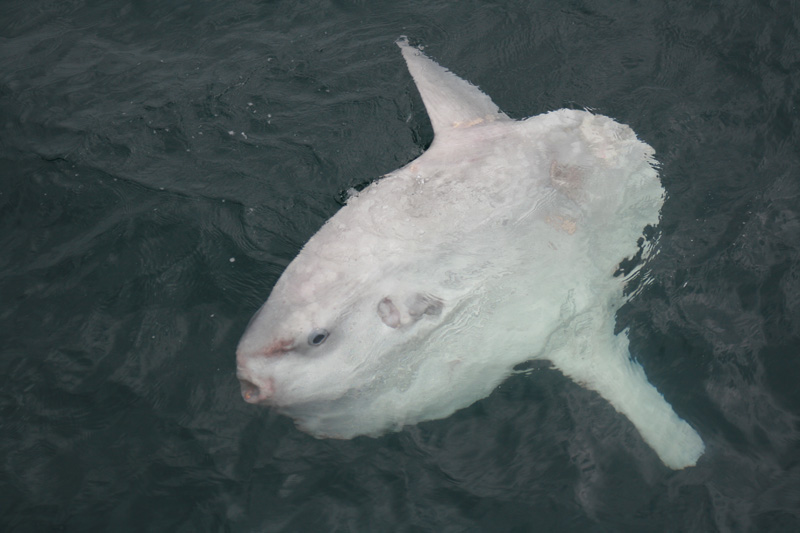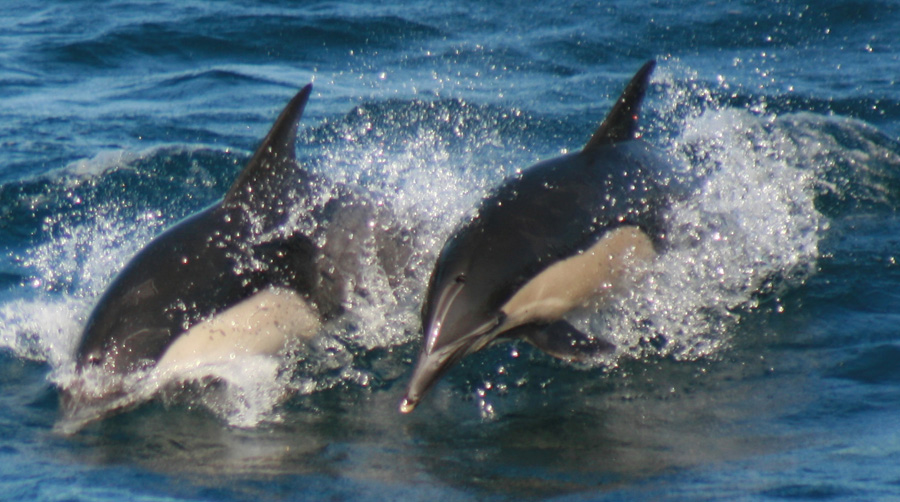Twinkling stars are fun to view, but the twinkling effect is a blurring problem for astronomers who attempt to view distant celestial objects using earth-based telescopes as light passes through our turbulent and wavy atmosphere. An analogous effect occurs in the ocean, and even swimming pools, as evidenced by dancing light producing time-varying, complex patterns. Also, have you ever wondered why you cannot see objects above a water surface when you are swimming? If so, you are not alone! In fact, oceanographers from 12 different nations recently conducted a field study of waves and light rays with an eye toward the problem of imaging in the ocean and across the air-sea interface. The Radiance in a Dynamic Ocean (RaDyO) program is funded by the Office of Naval Research (ONR) to investigate this problem and to advance our understanding of waves and light propagation across the air-sea interface and within the upper ocean. This topic bears not only upon imaging, but also on the use of light field measurements for characterizing and quantifying surface waves, phytoplankton physiology and productivity, near surface thermodynamics, natural and man-made surfactants, bubbles, and gas exchange across the air-sea interface. Several aspects of RaDyO also bear on the problem of constraining global carbon budgets.
The first phase of RaDyO centered on the testing of newly developed optical and wave sensing instrumentation from the Scripps Institution of Oceanography pier in January, 2008. In September 2008, RaDyO investigators led by Professor Tommy Dickey came to the Santa Barbara Channel for the first of two major field experiments. RaDyO instrumentation was deployed from the Research Platform (R/P) FLIP [acronym for FLoating Instrument Platform (see website , the research vessel (R/V) Kilo Moana, two autonomous underwater vehicles (AUVs, essentially robotic submarines), a small platform for collecting surfactants at the ocean surface (dubbed Lil Kilo Moana for obvious reasons), and a small airplane. These collective platforms measured a host of ocean processes related to the fundamental problem of light propagation as affected by waves, turbulence, bubbles, surfactants, and the optical properties of near surface seawater.
Why were R/P FLIP and the R/V Kilo Moana chosen as the primary platforms for RaDyO? Stability! The center of gravity of the ~355 ft long FLIP, when flipped of course, is very deep. Thus, its vertical and rolling motion in the water is minimal. This is important for measuring waves and near surface light, as removal of the effects of normal ship motion is difficult if not impossible. And why R/V Kilo Moana? The Kilo Moana is a 186 ft long SWATH vessel. SWATH is one of the many acronyms of RaDyO and stands for Small Water Area Twin Hull. So, the Kilo Moana is much like a catamaran, but far more stable as its center of gravity is relatively low in the water as well. RaDyO is taking advantage of two of the most stable vessels in existence.
Why was the Santa Barbara Channel selected for the first RaDyO field experiment? First, the conditions of interest were moderate sea states and winds. Second, a site whose optical properties had been characterized was desirable. And third, an accessible location would allow for transfers of personnel and instrumentation from shore. The first point was nicely satisfied during RaDyO as a broad range of winds and sea states was observed and a big bonus was the occurrence of several sunny days – a wonderful thing for optical oceanographers interested in the propagation of natural sunlight. The second selection criterion was met thanks to past optical work in the Channel by Ray Smith, Dave Siegel, Libe Washburn, and the Ocean Physics Laboratory. The third aspect turned out to be far more important than RaDyO scientists had envisioned, as early mechanical problems with a large AUV were only solved when parts were transported to the Kilo Moana by a small boat (Zephyr) out of Ventura.
The data collected from all of the RaDyO platforms are being analyzed at present, and modelers from MIT, Johns Hopkins, and Texas A & M are anxiously awaiting the ingestion of the field data into their models. The imaging problem for the modelers is analogous to that of the astronomers who attempt to remove the blurring effect of atmospheric waves and turbulence. The next field experiment will be conducted off Hawaii in August 2009, and plans are already being discussed during evening sessions by the oceanographers on the Kilo Moana and FLIP. The Hawaiian site is desirable, as it will provide larger sea swell, stronger winds, and contrastingly clear waters. A Waves and Rays workshop will be held in early January 2009, with participants coming from several countries and states, as well as southern California.
As a footnote, a bit of optical oceanographic history might be of interest to UCSB Geographers. Ray Smith, former Chairman of Geography and Jerlov Award winner, was one of the early pioneers of optical oceanography; he developed and used some of the early spectral radiometers. His leadership was instrumental in one of the early field experiments devoted to optical oceanography, called ODEX, in 1982. Ray, Tommy Dickey (then at USC), and Dave Siegel (then a student at UCSD) collected data from R/P FLIP, a conventional research vessel, and even a tugboat – all located in the central North Pacific, roughly halfway between California and Hawaii. So, FLIP’s appearance in the Channel is kind of déjà vu for them. Later, Ray, Tommy, Dave, and Libe Washburn, collectively conducted several more experiments that were devoted to a variety of problems, including mesoscale eddies, equatorial waves, monsoons, and hurricanes at sites in the North and South Pacific and Atlantic, in the equatorial Pacific, the Arabian Sea, and Antarctica. In all of these experiments, optical measurements were critical in advancing our knowledge of upper ocean thermodynamics and dynamics, elemental fluxes (i.e., carbon, plant nutrients, etc.), ocean biogeochemistry, and ocean productivity. Interestingly, UCSB optical oceanographers have done numerous field experiments independent of each other, yet their ties have remained close over the past 25 years and the lure of doing oceanography in the Santa Barbara Channel has drawn them together once again.
Thanks to Professor Dickey for providing this article and the accompanying photos. BTW, Tommy is one of two leading scientists nationwide to recently be awarded a prestigious Secretary of the Navy and Chief of Naval Operations Chair in Oceanographic Sciences – only 12 oceanographers have been granted this award since its inception in 1984.

